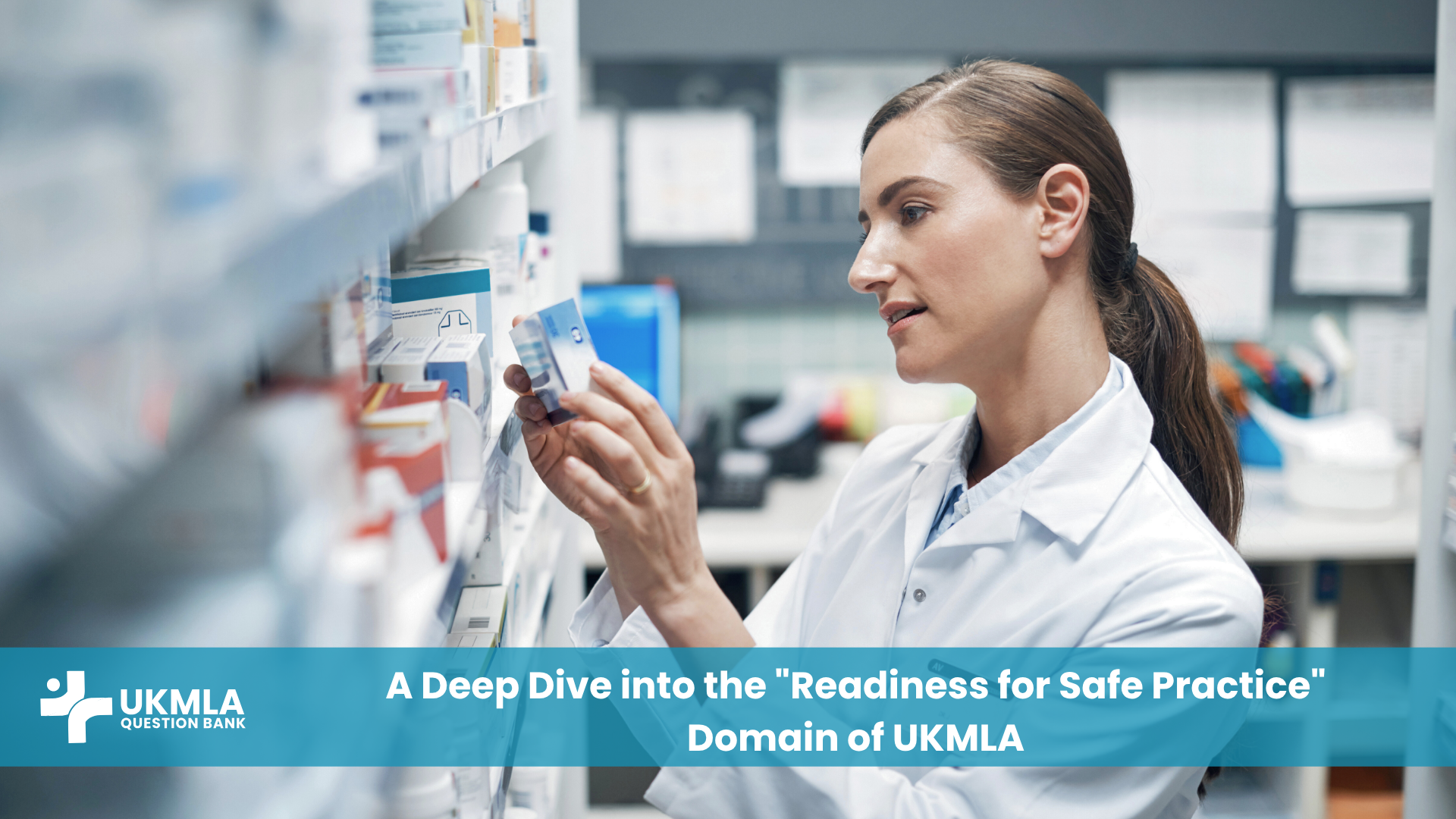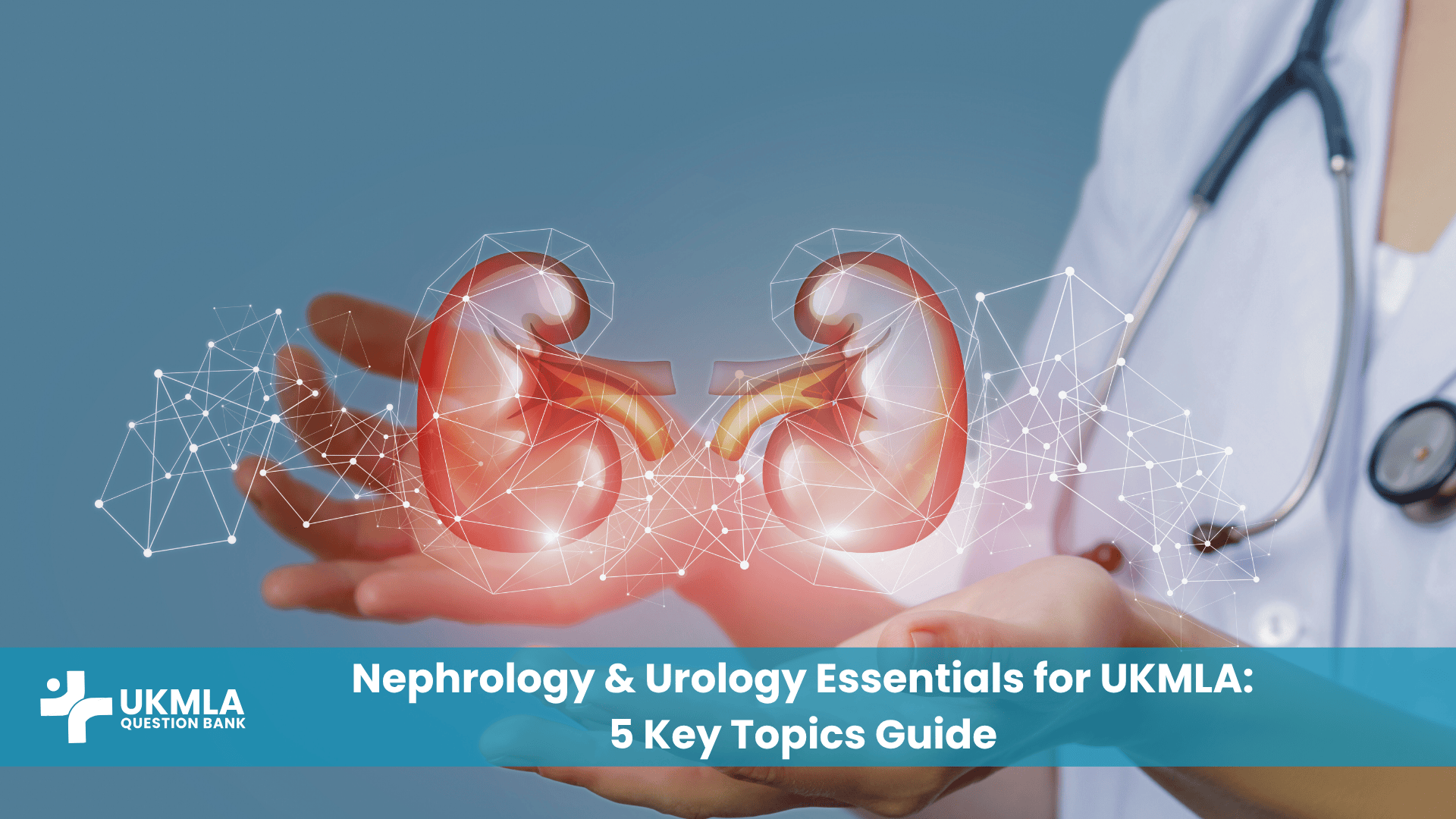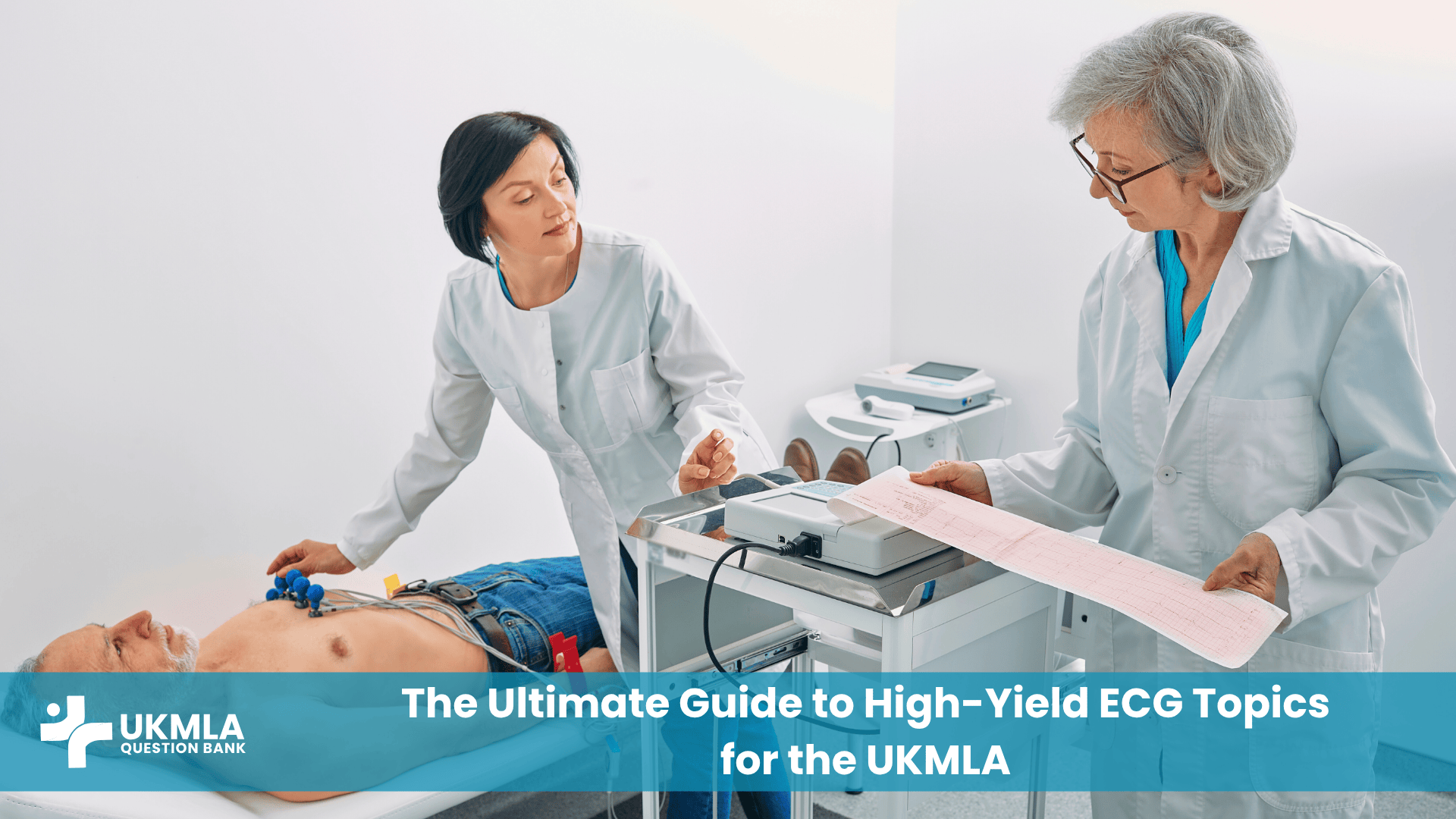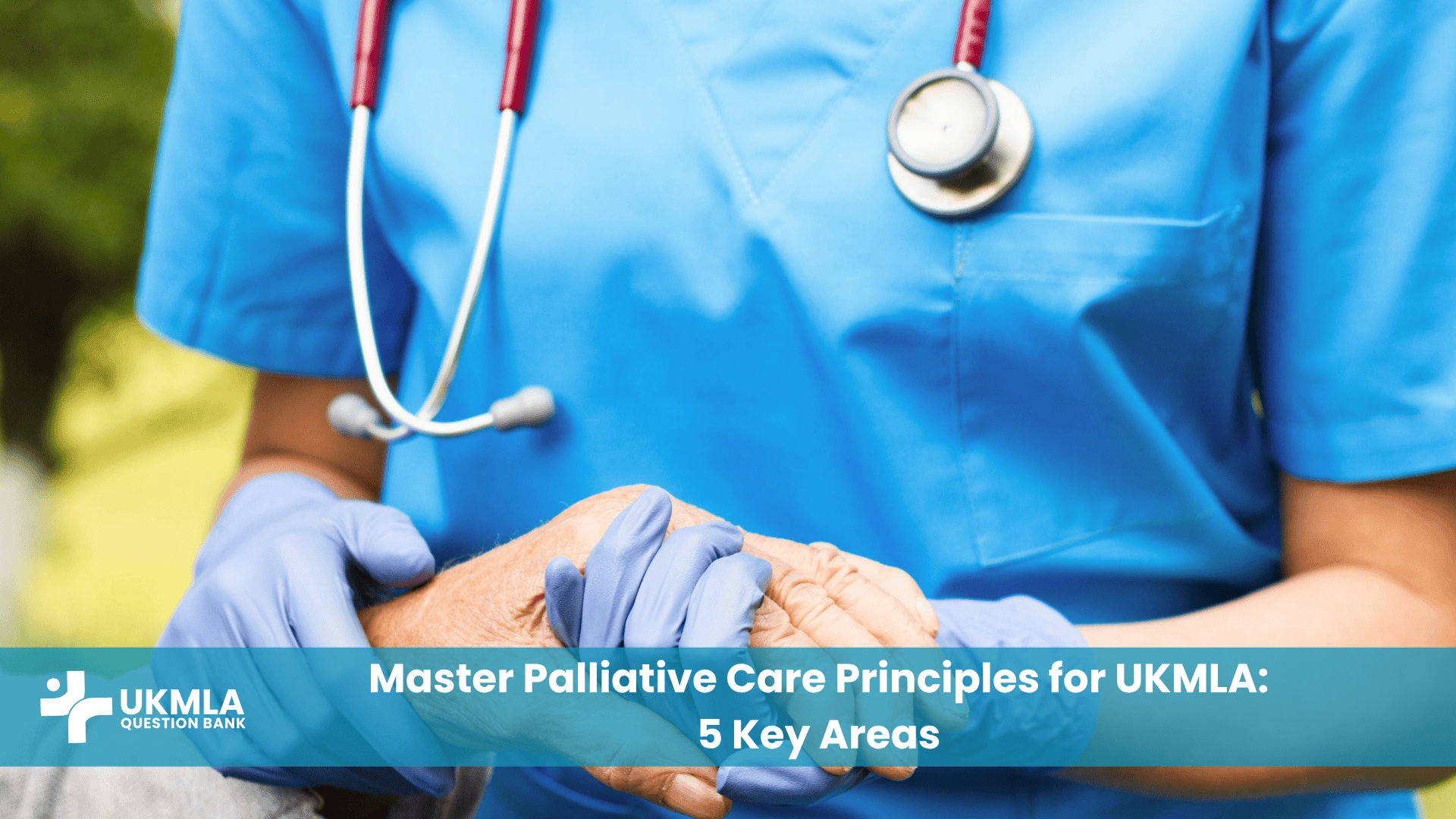The UK Medical Licensing Assessment (UKMLA) is fundamentally designed around a core principle: ensuring that all doctors entering UK practice are equipped for safe and effective patient care from day one. Central to this is the concept of “Readiness for Safe Practice.” This isn’t just a vague ideal; it’s a clearly defined domain that underpins the entire UKMLA framework, influencing its content, structure, and assessment methods. Understanding what the General Medical Council (GMC) means by UKMLA Readiness for Safe Practice is crucial for any candidate, whether a UK medical student or an International Medical Graduate (IMG).
This deep dive will explore the multifaceted nature of the “Readiness for Safe Practice” domain within the UKMLA. We’ll examine how it’s defined, how it translates into examinable competencies, and why mastering this domain is key to not only passing the UKMLA but also to thriving as a competent and confident doctor in the NHS.
What Does “Readiness for Safe Practice” Mean in the UKMLA Context?
“Readiness for Safe Practice” in the context of the UKMLA refers to the attainment of a specific set of knowledge, skills, and professional behaviours that enable a newly qualified doctor (typically at the level of completing Foundation Year 1 – F1) to manage patients safely and effectively, make sound clinical judgments, and work appropriately within the UK healthcare system.
This concept is directly linked to the GMC’s primary responsibility: protecting patients. The UKMLA Readiness for Safe Practice domain ensures that before a doctor is granted a licence to practise, they have demonstrated competence in areas critical to avoiding harm and providing good quality care. As highlighted in our article, “[Why the UKMLA Was Introduced: Understanding the GMC’s Aims],” enhancing patient safety is a paramount objective.
The GMC’s Outcomes for graduates document heavily informs this domain. These outcomes describe what new medical graduates are expected to know and be able to do, and “Readiness for Safe Practice” is the overarching theme that ties them together for the purpose of licensing.
How is “Readiness for Safe Practice” Embedded in the UKMLA?
The UKMLA Readiness for Safe Practice domain is not a standalone section of the exam but rather an ethos that permeates both the Applied Knowledge Test (AKT) and the Clinical and Professional Skills Assessment (CPSA). It is reflected in:
The MLA Content Map: This crucial document, your “[Blueprint for Success],” is structured around competencies essential for safe practice. It details:
Areas of Clinical Practice: Focusing on common and important conditions and presentations that a junior doctor must be able to manage safely.
Areas of Professional Knowledge: Emphasizing ethics, law, patient safety protocols, and professional responsibilities.
Clinical and Professional Capabilities: Highlighting practical skills, communication, teamwork, and diagnostic reasoning.
Question and Station Design:
AKT questions are often scenario-based, requiring you to apply knowledge to make safe clinical decisions (e.g., choosing the most appropriate initial investigation or management for a patient presenting with acute symptoms). The emphasis is on applied knowledge, not just recall. For more on the AKT, see “[Decoding the UKMLA: Structure, Format, and Scoring Explained]”.
CPSA stations directly simulate real-world clinical encounters where safe practice is paramount. This includes taking accurate histories, performing competent examinations, communicating effectively and empathetically, obtaining informed consent, and recognizing limitations.
Assessment Criteria: Marking schemes for both AKT and CPSA will implicitly or explicitly reward responses and actions that demonstrate safe practice, while penalizing those that could lead to patient harm.
Key Components of “Readiness for Safe Practice” Assessed in UKMLA
To truly understand UKMLA Readiness for Safe Practice, let’s break down its key components as they are likely to be assessed:
1. Sound Clinical Knowledge and its Application
Accurate Diagnosis: Ability to formulate a reasonable differential diagnosis based on patient presentation and initiate appropriate investigations.
Safe Prescribing: Understanding indications, contraindications, interactions, and side effects of common medications; calculating dosages correctly. This is a high-stakes area where errors can cause significant harm.
Recognizing Red Flags and Emergencies: Identifying patients who are critically unwell or have conditions requiring urgent intervention.
Understanding Basic Sciences: Applying knowledge of anatomy, physiology, pharmacology, and pathology to understand disease processes and treatment rationales.
2. Competent Clinical Skills
Systematic History Taking: Gathering relevant information efficiently and empathetically.
Proficient Physical Examination: Performing examinations correctly, identifying key signs, and interpreting findings.
Safe Practical Procedures: Demonstrating competence in common procedures expected of an F1 doctor (e.g., venepuncture, cannulation, basic life support).
Data Interpretation: Accurately interpreting common investigations like ECGs, X-rays, blood tests, and understanding their implications for patient management.
3. Effective Communication and Interpersonal Skills
Patient-Centred Communication: Listening actively, explaining information clearly and jargon-free, checking understanding, and showing empathy.
Shared Decision-Making: Involving patients in decisions about their care and respecting their autonomy.
Obtaining Informed Consent: Understanding the principles and practice of obtaining valid consent.
Communicating with Colleagues: Clear, concise, and professional communication with nurses, senior doctors, and other members of the multidisciplinary team. This includes effective handovers.
Breaking Bad News: Handling sensitive conversations with compassion and skill.
4. Professionalism, Ethics, and Legal Understanding
Adherence to Good Medical Practice: Understanding and applying the principles outlined in the GMC’s Good Medical Practice guidance.
Ethical Reasoning: Ability to identify and navigate common ethical dilemmas in clinical practice.
Understanding of UK Law: Awareness of relevant legislation (e.g., Mental Capacity Act, safeguarding laws).
Confidentiality and Data Protection: Maintaining patient confidentiality appropriately.
Honesty and Integrity: Demonstrating probity in all professional interactions.
Recognizing Limitations and Seeking Help: Knowing when a situation is beyond one’s own competence and when to escalate or seek senior advice. This is a cornerstone of safe practice.
5. Patient Safety and Quality Improvement
Understanding Risk Management: Identifying potential risks to patients and taking steps to mitigate them.
Awareness of Human Factors: Recognizing how human factors can contribute to errors.
Incident Reporting: Understanding the importance of reporting adverse events and near misses.
Basic Principles of Audit and Quality Improvement: Appreciating the role of these activities in enhancing care.
This comprehensive view of UKMLA Readiness for Safe Practice should guide your preparation. It’s not just about what you know, but how you apply that knowledge safely and professionally. If you are an IMG, our “[UKMLA for International Medical Graduates (IMGs): A Step-by-Step Guide]” can help you navigate the specific requirements. UK students should refer to “[UKMLA for UK Medical Students: What Your University Expects]”.
How to Demonstrate “Readiness for Safe Practice” in the UKMLA
In the AKT:
Think Safety First: When answering SBAs, always consider the safest option for the patient. If multiple options seem plausible, which one minimizes risk or addresses the most urgent issue?
Prioritize: Questions often test your ability to prioritize investigations or management steps.
Understand Guidelines: Familiarity with key UK clinical guidelines (e.g., NICE) is crucial as these are designed to promote safe and effective practice.
Recognize “Don’t Miss” Diagnoses: Be alert for scenarios pointing towards serious conditions that require prompt action.
In the CPSA:
Systematic Approach: Adopt a structured and systematic approach to history taking, examination, and procedures. This minimizes omissions.
Verbalize Your Thinking (Appropriately): In some stations, explaining your reasoning can demonstrate safe thought processes.
Check, Check, Check: For procedural skills or prescribing, demonstrate meticulous attention to detail (e.g., checking patient identity, drug allergies, dosage calculations).
Communicate Clearly and Empathetically: Ensure the patient (simulated) understands what you are doing and saying. Address their concerns.
Always Consider Patient Safety: Explicitly mention safety checks or considerations where appropriate (e.g., “Before proceeding, I would ensure…”).
Escalate When Necessary: If a scenario presents a situation beyond the scope of an F1 doctor, clearly state that you would seek senior help or escalate care. This demonstrates insight and safety.
Professional Demeanour: Maintain a calm, respectful, and professional attitude throughout all stations.
Using resources like “[UKMLA Mock Exams: Your Ultimate Key to Unlocking Top Scores…]” can provide invaluable practice in applying these principles under exam conditions.
Frequently Asked Questions (FAQ) on “Readiness for Safe Practice” in UKMLA
No, it’s not a separate section. It’s an overarching domain and principle that is assessed throughout both the Applied Knowledge Test (AKT) and the Clinical and Professional Skills Assessment (CPSA).
The Content Map is structured around the knowledge, skills, and behaviours essential for safe practice. It details common clinical presentations, professional responsibilities, and capabilities that a doctor needs to manage patients safely at the F1 level.
Many AKT questions will implicitly or explicitly test safe practice. This could involve choosing the safest drug, identifying red flag symptoms requiring urgent action, or selecting the most appropriate initial management to prevent deterioration.
It’s assessed through your ability to explain complex information clearly, ensure patient understanding, obtain informed consent, show empathy, handle difficult questions appropriately, and involve the patient in decision-making – all of which contribute to safe and patient-centered care.
No. It means having a strong grasp of common and important conditions, being able to recognize when a patient is seriously ill, knowing your limitations, and knowing when and how to seek senior help. It’s about safe management within the scope of an F1 doctor.
Very important. Practising safely in the UK means adhering to established UK clinical guidelines (e.g., NICE), ethical frameworks (GMC guidance), and legal requirements. The UKMLA will assess your ability to apply these.
Yes. A critical safety error (e.g., prescribing a dangerously incorrect dose, missing a clear red flag that leads to potential harm in the scenario, or a major breach of professionalism) could lead to failing a station, and potentially the exam, even if other aspects were performed well.
Integrate safety considerations into all your learning. When studying a condition, ask “What are the safety nets? What are the red flags? How can I ensure my management is safe?” Practice clinical skills and communication with a constant focus on patient safety.
Yes. While directly assessing teamwork in an individual exam is complex, scenarios might test your understanding of when to involve other team members or how to communicate effectively within a team. Situational awareness (recognizing a deteriorating patient, for example) is also key.
Not necessarily. Examiners look at the overall performance and the nature of any errors. Minor, self-corrected errors might be viewed differently from significant, unrecognised safety breaches. The key is demonstrating insight and a fundamentally safe approach.
Conclusion: “Readiness for Safe Practice” as Your Guiding Star
The UKMLA Readiness for Safe Practice domain is the golden thread running through the entire assessment. It is the standard against which you will be measured. By deeply understanding its components and consciously integrating them into your study and skills practice, you are not just preparing to pass an exam; you are preparing to be a safe, competent, and compassionate doctor in the UK.
Let “Readiness for Safe Practice” be your guiding star throughout your UKMLA preparation. Focus on understanding why certain approaches are safer, how to communicate effectively to ensure patient understanding and safety, and when to seek help. This mindset will serve you well in the UKMLA and, more importantly, throughout your entire medical career.



